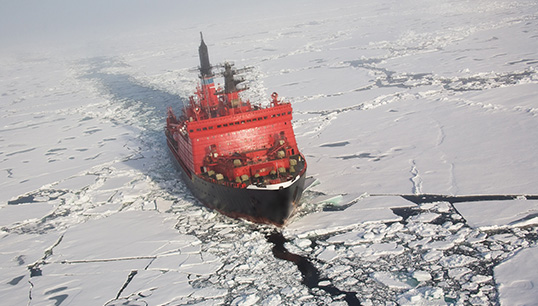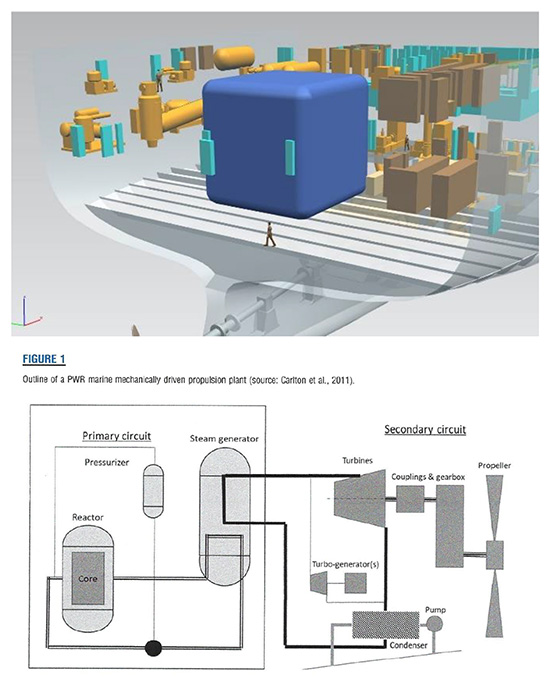- Topics
- Campaigning
- Careers
- Colleges
- Community
- Education and training
- Environment
- Equality
- Federation
- General secretary message
- Government
- Health and safety
- History
- Industrial
- International
- Law
- Members at work
- Nautilus news
- Nautilus partnerships
- Netherlands
- Open days
- Opinion
- Organising
- Podcasts from Nautilus
- Sponsored content
- Switzerland
- Technology
- Ukraine
- United Kingdom
- Welfare

As the maritime industry moves to decarbonise, safety regulations are lagging behind innovations, and seafarers could be at risk from accidents relating to fuels such as hydrogen and ammonia. But there is a low-carbon fuel with decades of use and safety regulations already in place. Odd Rune Malterud of the Norwegian Union of Marine Engineers makes the case for nuclear
New energy sources for ship propulsion, manoeuvring and operation are currently in the spotlight, along with innovative engine technologies to improve the protection of the marine environment.
Environmental regulations have been developed, but 'human element' safety aspects have been overlooked. The regulatory regime must fully take into consideration the safety aspects for maritime workers and the practical viability of any new propulsion technology for shipboard working and living.
Technological and operational changes to reduce vessel emissions will affect the health and safety of engineers, electricians, and their shipmates – who will face challenges such as high voltages, toxicity, corrosiveness, and fire and explosion hazards.
Health and safety must be central to any proposals for reducing emissions from shipping, not an afterthought. Therefore, engineers must be directly involved in creating and enforcing safety standards to ensure that all seafarers have the right competence and opportunities to serve onboard any type of ship without being criminalised and return home safely.
Poor understanding of green marine tech
For a chief engineer who has been responsible for the MARPOL regulations for many decades, it is difficult to understand why politicians only focus on carbon reduction without thinking of the consequences of introducing fuels such as ammonia, which could put both crew and environment at risk by the use of toxic additives, corrosive liquids, very high pressure, and temperatures ranging from the bottom to the top of the scale.
To gain credibility, politicians should at least understand the context that a ship operates in the world's largest cooling medium – and that issues such as energy density, storage, weight, flashpoint and infrastructure including bunkering are crucial for safe operation.
They should also appreciate the critical difference between developing new technology in a laboratory and its use at sea. Issues of temperature, humidity and vibration combine with the need for crew members to have adequate competence to operate the technology safely.
Ready-made safety regulations for nuclear
There are no maritime safety regulations in place for the implementation of lithium batteries, hydrogen or ammonia, to name just a few potential fuel sources. However, for nuclear powered merchant vessels, the International Maritime Organization (IMO) has had dedicated regulations available since 1962 in Chapter VIII of the Convention on Safety of Life at Sea (SOLAS).
Maritime nuclear power in action
Energy from nuclear fission is already used in vessels. Such vessels are powered by a steam turbine where the boiler is heated with energy from a small reactor. The first submarine of this type, the USS Nautilus, was completed in September 1954. A few hundred such submarines were eventually built for the US, Russian, British and French navies. These boats are often equipped with long-range missiles.
The USA and Russia also have naval vessels (surface vessels) powered by nuclear energy. The first nuclear-powered surface ship was the Soviet icebreaker Lenin, which was launched in December 1957, and Russian nuclear icebreakers are still in use.
Around 1960, a few nuclear-powered cargo ships were built, but none of these original vessels are in operation any more. However, a newer Russian nuclear cargoship has been in service since 1988: the Sevmorput.
This vessel is powered by a single KLT-40 nuclear fission reactor with a thermal output of 135 megawatts. The reactor core contains 150.7 kilograms (332 lb) of 30% 40% or 90% enriched uranium in uranium-zirconium alloy and has reportedly required refuelling only twice. The nuclear power plant onboard the vessel produces 215 tons of steam per hour at a pressure level of 40 atm (4,100 kPa) and temperature of 290C (554F). In an emergency, steam can also be produced by a diesel-powered boiler (50 t/h, 2,450 kPa, 360C).
Molten salt reactor
There are also alternatives to the use of uranium as a nuclear fuel. A molten salt reactor (MSR) is a class of nuclear fission reactor in which the primary nuclear reactor coolant and/or the fuel is a molten salt mixture.
The low pressure and low temperature reactor is based on a technology of more than 50 years' standing that provides a high degree of nuclear power safety to produce clean electrical energy for propulsion and manoeuvring.
The nuclear fuel used – thorium – is much less radioactive than uranium fuel and accidents such as nuclear meltdown are almost impossible.

Next steps for nuclear
According to the United Nations Intergovernmental Panel on Climate Change (IPCC), nuclear power is one of the few energy sources that can contribute significantly to global electricity production without the accompanying emissions of CO2 and other greenhouse gases. This is a message we should take onboard in shipping.
Given the nuclear accidents of the past such as Three Mile Island and Chernobyl, politicians and the general public can often be understandably wary of nuclear power. But the maritime sector has a strong safety record and good regulations in place for its use on vessels.
In contrast, some of the new low-carbon fuels being proposed for shipping are unproven and carry a risk of serious accidents at least as high as nuclear, if not higher.
It's time for our industry to look again at nuclear as part of our long-overdue efforts to cut greenhouse gas emissions, for the safety of our seafarers.
Tags
